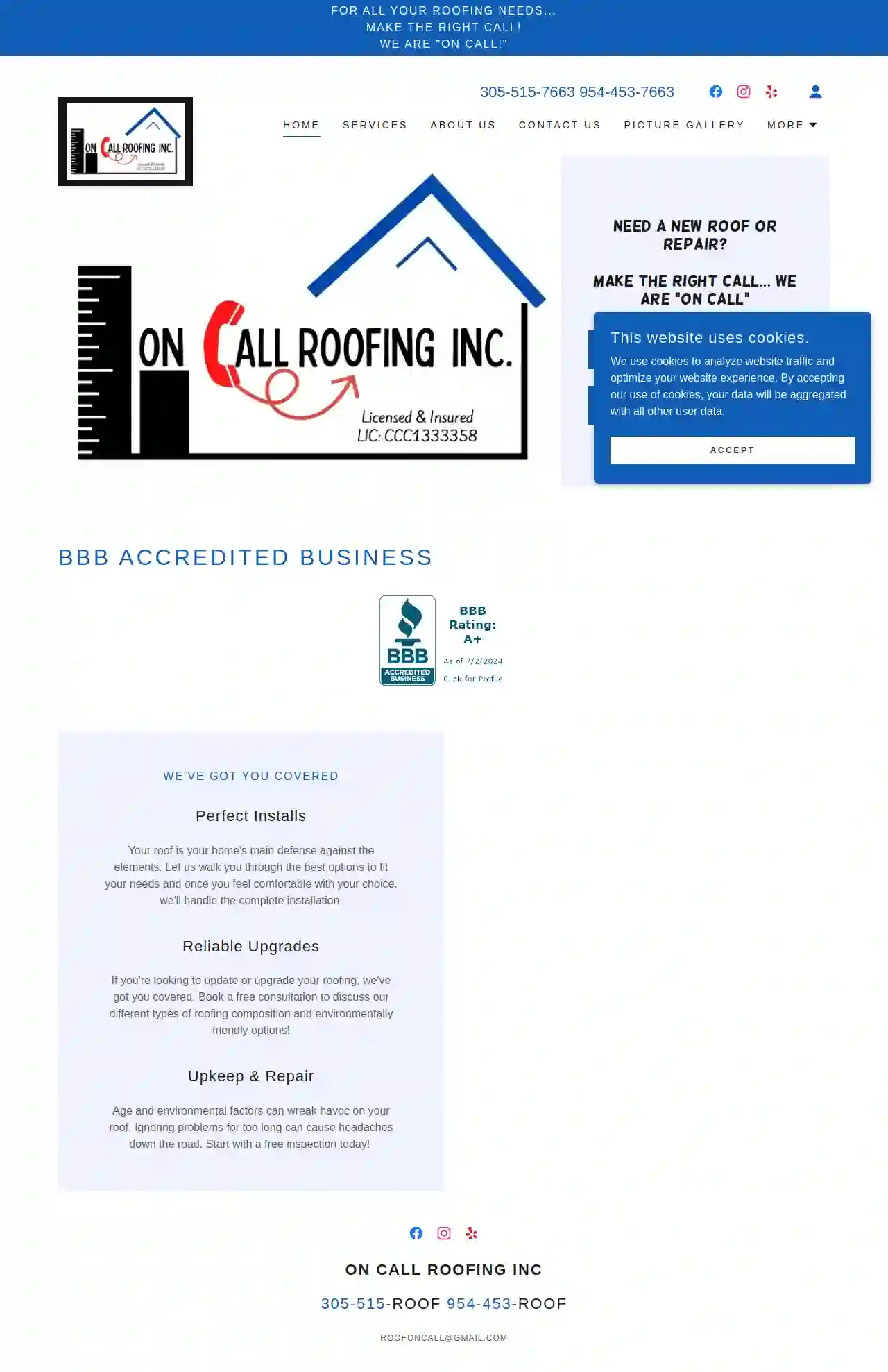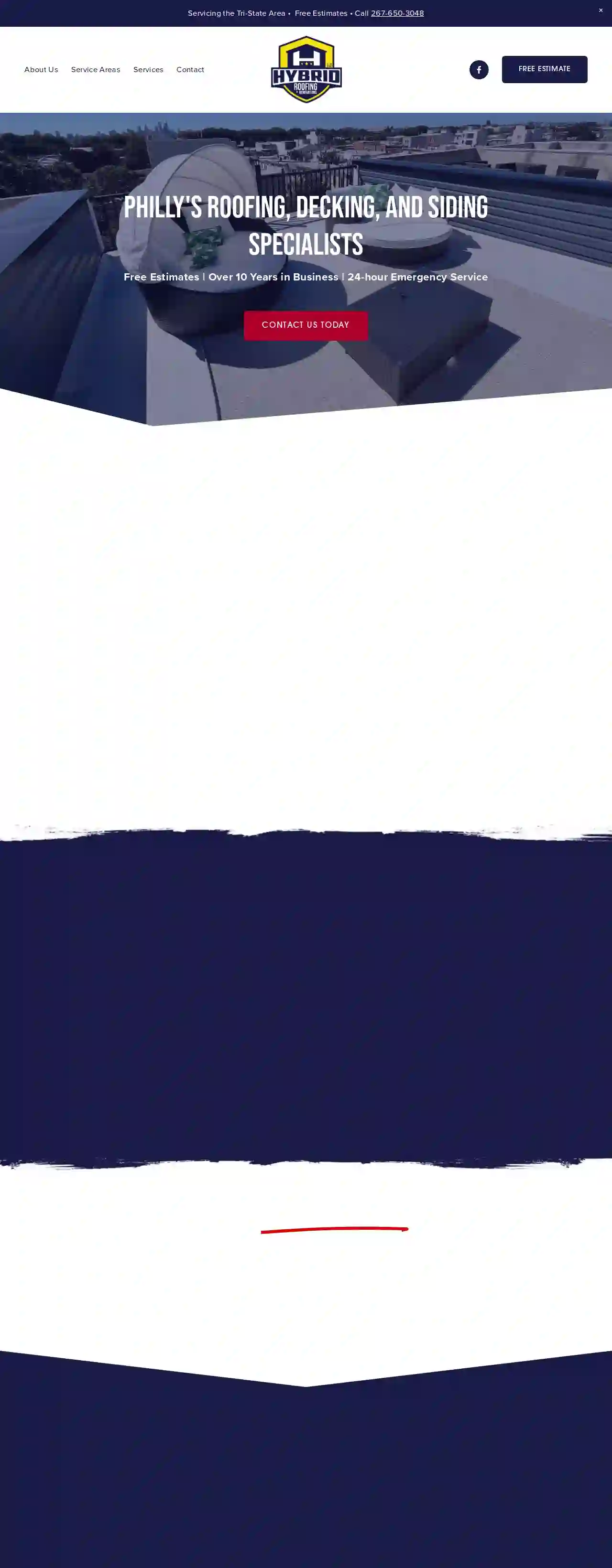Roofing Companies Whitemarsh
Find top Roofing Contractor in Whitemarsh
Receive 3 FREE Roofing Company quotes for your project today! Compare profiles, reviews, accreditations, portfolio, etc... and choose the best deal.

Dior Construction
4.8229 reviews37 Woodbine St, Bergenfield, 07621, USNew Jersey’s Most Reputable Exterior Home Improvement Company Pay Nothing for 12 Months!No Payments No Interest for a Full Year! At Dior Construction, we let our customers do the talking! Upgrade your home with the confidence and peace of mind that comes with choosing the team at Dior Construction. With our 5-star rating and top-quality products like GAF Timberline shingles, James Hardie siding, and Anderson windows, we provide exceptional roofing, siding, window, and gutter replacement services that will elevate your home’s exterior. Our commitment to unmatched professionalism and integrity is at the core of everything we do, from providing honest estimates to delivering quality installations. Plus, we’re dedicated to giving back to the community, so you know that when you choose Dior Construction, you’re not just upgrading your home, you’re supporting a company that cares about the people it serves. We know you’ve heard it before, but we’ll say it again: you get what you pay for. Even the best products will not live up to their potential when handled improperly. Dior Construction assures you’re getting quality workmanship, ensuring your choice of roofing, siding, or gutter is installed properly. Since our services are available at affordable prices, you won’t have to compromise and choose between quality and working with a budget! The Dior Construction Difference We’re continuously recognized for our dedication to quality workmanship, attention to detail, and commitment to excellence. We are proud to be one of Qualified Remodelers Top 250 contractors in the nation, a GAF Elite Certified Contractor, achieved James Hardie Elite Preferred status, and the winner of the 2022 Angi’s Super Service Award. With over 200 Google reviews and a 5-star ratings from our clients, you can rest assured that your project will be in the hands of experts.
- Services
- Why Us?
- Accreditations
- Our Team
- Testimonials
- Gallery
Get Quote
PJ Fitzpatrick
4.8737 reviews123 Main St, Philadelphia, 19001, USMaking Life Better, One Home At A Time. At PJ Fitzpatrick, we strive for perfection. When it comes to home improvement services, we understand that every homeowner has unique needs and expectations. That's why we're dedicated to providing exceptional customer satisfaction, one home at a time.
- Services
- Why Us?
- Accreditations
- Our Team
- Testimonials
- Gallery
Get Quote
Polyglass USA Inc
3.536 reviewsSuite 100, 123 Main St, Fort Lauderdale, 33333, USPolyglass is a leading manufacturer of modified bitumen membranes, APP membranes, and other roofing products. Our products are designed to provide superior waterproofing and insulation for commercial and residential buildings. With a wide range of products and solutions, Polyglass is the go-to choice for roofing professionals and building owners alike.
- Services
- Why Us?
- Accreditations
- Our Team
- Testimonials
- Gallery
Get Quote
M & K Roofing General Construction Corp
53 reviews920 McDonald Ave, Brooklyn, NY 11218, USWelcome to M&K Roofing General Construction Corp.! We are thrilled to provide you with the best construction services in the area. Our staff is ready to work with you and start remodeling your home or business! Call us today for more information. We offer residential and commercial services, free estimates, and 12 years of experience. We cover 4 counties in New York and are available Monday to Saturday from 7AM to 5PM. Our commitment is to your convenience, and we guarantee professional services. Our team members are ready to provide you with the attention that you deserve, and we offer personalized customer service to make your dreams come true. We are qualified to perform the service you need, and our staff is punctual in every project because we understand the importance of making our customers enjoy their time with us.
- Services
- Why Us?
- Gallery
Get Quote
DLJ Roofing Contractors
4.826 reviewsErie, USDLJ Roofing is a reputable local roofing company with satisfied customers. We provide high-quality roofing services to commercial and residential communities in Miami-Dade, Broward, and Palm Beach counties. As a trusted roofing contractor in South Florida, we take immense pride in showcasing the quality and craftsmanship of our work.
- Services
- Why Us?
- Gallery
Get Quote
On Call Roofing Inc.
Erie, USFor all your roofing needs... Make the right call! We are "ON CALL"! 305-515-7663 954-453-7663. We've Got You Covered. Perfect Installs. Your roof is your home's main defense against the elements. Let us walk you through the best options to fit your needs and once you feel comfortable with your choice, we'll handle the complete installation. Reliable Upgrades. If you're looking to update or upgrade your roofing, we've got you covered. Book a free consultation to discuss our different types of roofing composition and environmentally friendly options! Upkeep & Repair. Age and environmental factors can wreak havoc on your roof. Ignoring problems for too long can cause headaches down the road. Start with a free inspection today!
- Services
- Why Us?
- Accreditations
- Our Team
- Gallery
Get Quote
Hybrid Roofing and Renovations
4.962 reviewsPhiladelphia, USPhilly's Roofing, Decking, and Siding Specialists Free Estimates | Over 10 Years in Business | 24-hour Emergency Service Contact us today HYBRID ROOFING Residential and Commercial Installation, Maintenance, and RepairsChoose family and locally owned Hybrid Roofing and Renovations for exterior home improvements in Philadelphia and surrounding PA and NJ counties. We specialize in roofing, siding, and decks. Contact us for a FREE estimate. Learn more HYBRID ROOFING SERVICES ROOF INSTALLATION Commerical Roofing Roof Deck Construction Stucco Remediation New Construction Siding Get a FREE EstimateHybrid Roofing and Renovations provides roofing and siding installation, repair, and maintenance including 24-hour emergency service in the Philadelphia, PA, area. Learn more
- Services
- Why Us?
- Gallery
Get Quote
Stott Roofing & Fireplaces
56 reviews123 Main St, Anytown, 12345, USAt Stott Roofing, we pride ourselves on being a family-owned and operated business with over 30 years of experience in the roofing industry. Our mission is to provide exceptional service, quality workmanship, and unparalleled customer satisfaction. We understand that every customer has unique needs and expectations, and we strive to exceed them with our attention to detail and commitment to excellence.
- Services
- Why Us?
- Accreditations
- Our Team
- Testimonials
Get Quote
Resnick Roofing & Contracting
4.9752 reviewsGibsonia, PA, 5320 William Flynn Hwy, 15044, USResnick Roofing is a trusted Pittsburgh roofing and siding contractor with over 15 years of experience. We offer a wide range of services, including roof replacement, roof installation, siding installation, and gutter replacement. Our team of experts is dedicated to providing the best products, installation, and warranty for our clients. We are a GAF Two-Star President's Club Award-winning Master Elite Contractor, ranking among the top 1% of the local industry. We offer flexible financing options and a 30% federal tax credit eligibility for solar roofing options. Contact us today to get a free quote and learn more about our services.
- Services
- Why Us?
- Accreditations
- Gallery
Get Quote
Fortuna Roofing
4.331 reviewsPhiladelphia, USFORTUNA ROOFING 87 Years and 4 Generations! At fortuna roofing we baby your roof! Schedule a FREE estimate We've Got You Covered What we offer Residential and Commercial Roofing Rubber roof installations Roof coatings and maintenance Custom metal work Fiberglass maintenance and repair What’s new? Fiberglass Repair and Maintenance Fortuna Roofing now offers the answer to your leaking fiberglass roof top decks! "IMPERVIOUS" is a liquid refurbishment that can quickly service and repair your leaking roof top deck. Contact us for more information! New Roof Warranty All new roof installs come included with a 15 year guarantee! Most major credit cards accepted Fully Licensed & Insured Social Photo Gallery
- Services
- Why Us?
- Gallery
Get Quote
Over 17,196+ Roofing Businesses on our directory
Our roofing contractors operate in Whitemarsh and surrounding areas!
Roofyng.com has curated and vetted Top Roofers near Whitemarsh. Find the most reliable business today.
Frequently Asked Questions About Roofing Companies
- Metal roofs: Reflect sunlight, reducing cooling costs.
- Tile roofs: Offer thermal mass, regulating temperature.
- Cool roofs: White or light-colored roofs with high solar reflectance.
- Green roofs: Vegetated roofs providing insulation and reducing heat absorption.
- Ventilation: Soffit vents provide intake ventilation, allowing fresh air to enter the attic and regulate temperature and moisture.
- Aesthetics: It creates a finished look to the roof's underside.
- Pest Control: A properly sealed soffit prevents pests like birds and squirrels from nesting in the attic.
- Age: If your roof is nearing or exceeding its expected lifespan, it's wise to consider replacement.
- Multiple Leaks: Several leaks or leaks that reappear after repairs suggest a widespread problem.
- Extensive Damage: Large areas of damaged, missing, or deteriorated roofing materials might be too costly or difficult to repair effectively.
- Sagging or Structural Issues: Sagging, deflection, or other structural issues indicate a compromised roof that needs replacement.
- Granule Loss (Asphalt Shingles): Significant granule loss indicates weathering and reduced protection.
- Curling or Buckling Shingles: Signifies age or improper ventilation.
- Increased Energy Bills: A poorly insulated roof can lead to higher heating and cooling costs.
- Regular Inspections: Inspect your roof at least twice a year for signs of damage or wear and tear.
- Gutter Cleaning: Clean gutters and downspouts regularly to prevent clogs and ensure proper drainage.
- Tree Trimming: Trim overhanging branches to avoid damage from falling debris and reduce shade, preventing moss growth.
- Proper Ventilation: Ensure good attic ventilation to regulate temperature and moisture.
- Timely Repairs: Address any damage promptly to prevent escalation.
What are some energy-efficient roofing options?
What is a soffit, and why is it important for my roof?
What are the signs that my roof needs to be replaced?
How do I prevent roof damage?
What are some energy-efficient roofing options?
- Metal roofs: Reflect sunlight, reducing cooling costs.
- Tile roofs: Offer thermal mass, regulating temperature.
- Cool roofs: White or light-colored roofs with high solar reflectance.
- Green roofs: Vegetated roofs providing insulation and reducing heat absorption.
What is a soffit, and why is it important for my roof?
- Ventilation: Soffit vents provide intake ventilation, allowing fresh air to enter the attic and regulate temperature and moisture.
- Aesthetics: It creates a finished look to the roof's underside.
- Pest Control: A properly sealed soffit prevents pests like birds and squirrels from nesting in the attic.
What are the signs that my roof needs to be replaced?
- Age: If your roof is nearing or exceeding its expected lifespan, it's wise to consider replacement.
- Multiple Leaks: Several leaks or leaks that reappear after repairs suggest a widespread problem.
- Extensive Damage: Large areas of damaged, missing, or deteriorated roofing materials might be too costly or difficult to repair effectively.
- Sagging or Structural Issues: Sagging, deflection, or other structural issues indicate a compromised roof that needs replacement.
- Granule Loss (Asphalt Shingles): Significant granule loss indicates weathering and reduced protection.
- Curling or Buckling Shingles: Signifies age or improper ventilation.
- Increased Energy Bills: A poorly insulated roof can lead to higher heating and cooling costs.
How do I prevent roof damage?
- Regular Inspections: Inspect your roof at least twice a year for signs of damage or wear and tear.
- Gutter Cleaning: Clean gutters and downspouts regularly to prevent clogs and ensure proper drainage.
- Tree Trimming: Trim overhanging branches to avoid damage from falling debris and reduce shade, preventing moss growth.
- Proper Ventilation: Ensure good attic ventilation to regulate temperature and moisture.
- Timely Repairs: Address any damage promptly to prevent escalation.